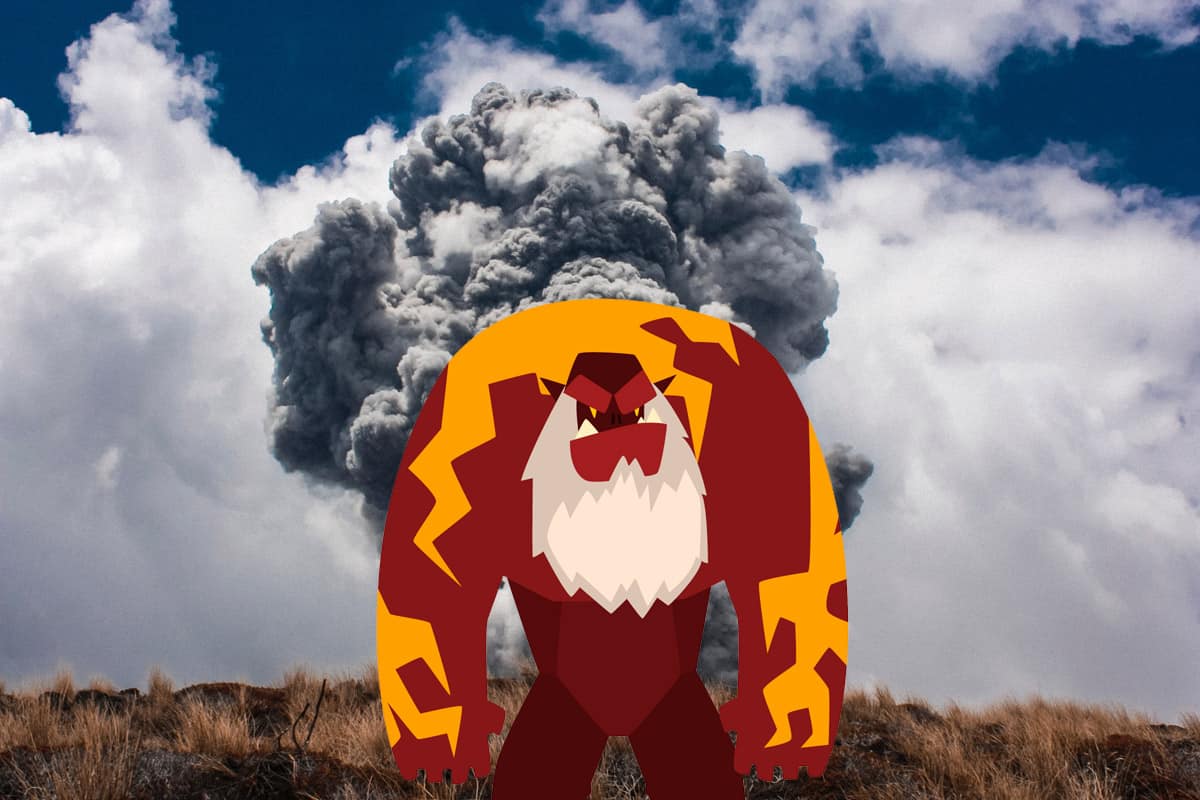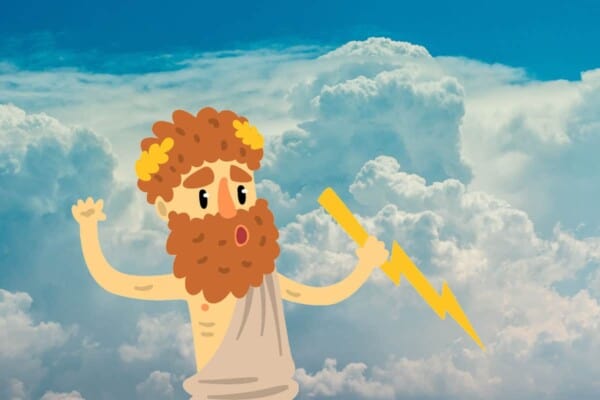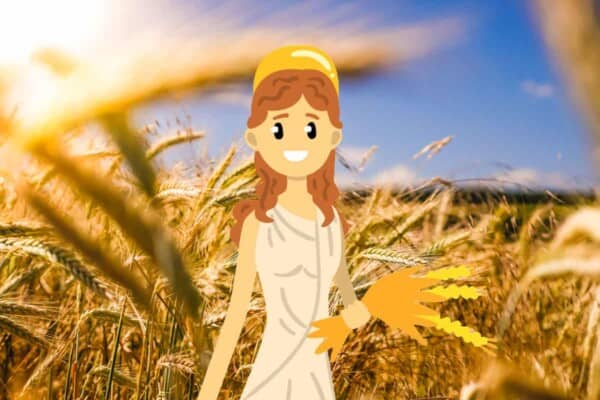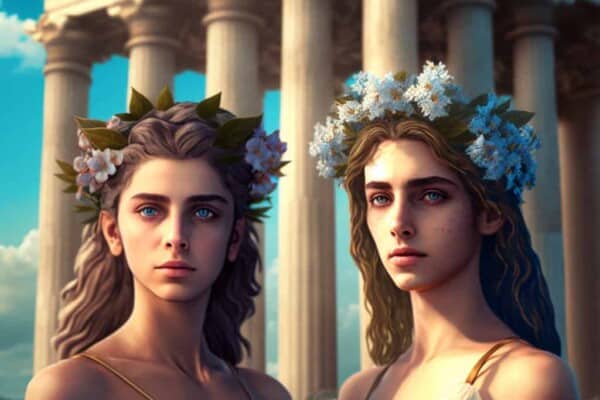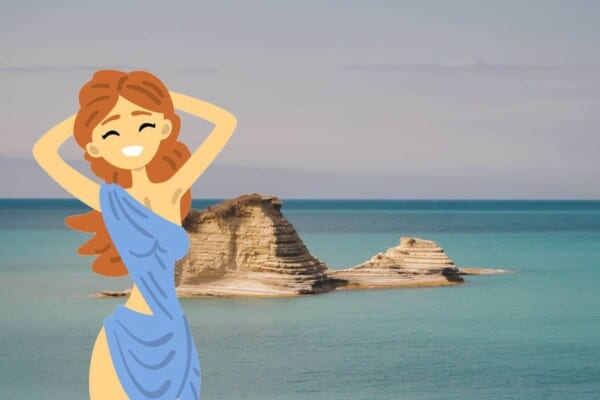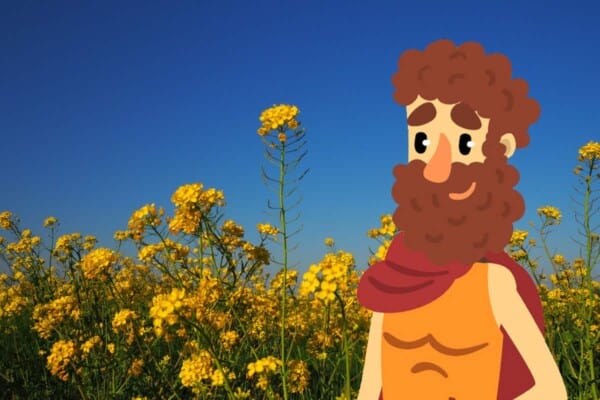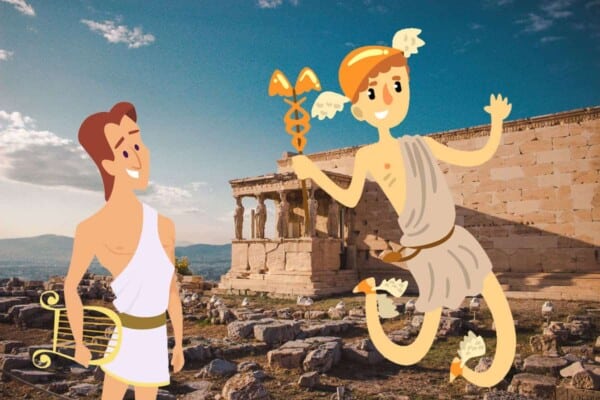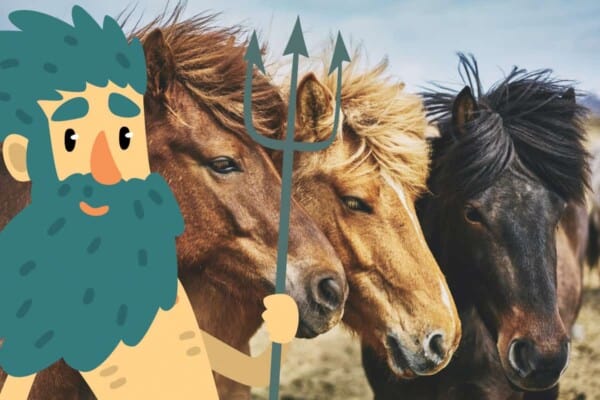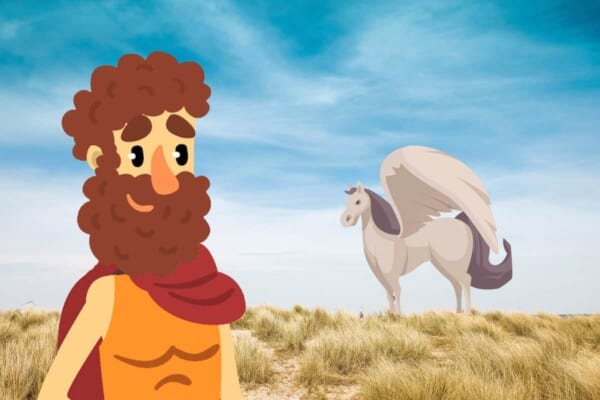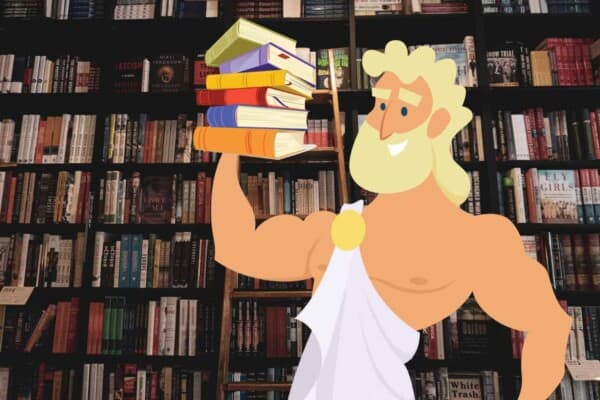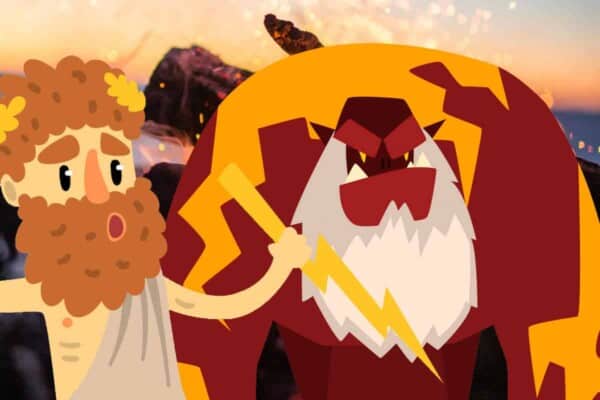The Titans were the children of the primordial beings who created the world in Greek myth, and they were the forefathers of the gods. The earth, Gaia, birthed twelve Titans who overthrew their father and ruled until their own children rose up against them. The youngest of the Titans, Kronos, was the father of Zeus.
There are plenty of stories surrounding these dangerous, powerful beings. The following myths about the Titans describe their impact both before, during, and after the Titanomachy. Some are well known, but some might surprise you or teach you something new!
Myths and Stories about the Greek Titans
1. The Genealogy of the Titans
The primordial being, Gaia, was the personification of the earth. She produced a son, Ouranos, who was the sky. Gaia married him and the two had several children. Their first six children became the ruling Titans: Oceanus, Coeus, Crius, Hyperion, Iapetus, Theia, Rhea, Themis, Mnemosyne, Phoebe, Tethys, and Kronos.
Eight of the siblings married one another – Kronos and Rhea, who became the parents of the Olympians, Oceanus and Tethys, who were parents to six thousand river gods and nymphs, Coeus and Phoebe, parents of Leto and Asteria, and Hyperion and Thea, parents of Helios, Selene, and Eos (the sun, the moon, and the dawn).
The two other sisters, Themis and Mnemosyne became wives of their nephew, Zeus. Iapetus married Clymene, his niece, and they were parents to Atlas, Menoetius, Prometheus, and Epimetheus. Finally, Crius married his half-sister through Gaia by Pontus, whose name was Eurybia. They became the parents of Astraeus, Pallas, and Perses.
Though the original twelve siblings are the official Titans, several of their offspring are also referred to as such, especially Atlas, Prometheus, Leto, and Helios.
They had several more full-blooded siblings – three hundred-handed creatures known as the Hecatoncheires, and three Cyclopes.
2. Overthrowing Ouranos
Ouranos was not a good father. When the Hecatoncheires and the Cyclopes were born, he locked them away in the bowels of the earth, which caused Gaia a great deal of grief. Her son, Kronos, sought to comfort her. Together, they hatched a plan to overthrow Ouranos and throw him from his position of power, leaving Kronos and his siblings to rule.
Gaia gave Kronos a sickle made of adamant, a mythical hard form of diamond. Kronos ambushed his father and shore off his genitals. Ouranos’s blood dropped onto the earth and sea. From the drops that landed on the earth (the body of Gaia) arose three groups of children: the Erinyes (Furies), the Gigantes (giants), and the Meliae, nymphs of the ash trees.
Meanwhile, from the blood that landed in the sea (personified in the goddess Thalassa), the goddess Aphrodite was born, rising from the sea foam.
Kronos then took over the throne of the world, with his siblings as his subjects. However, despite Gaia’s wishes, he kept his non-Titan siblings imprisoned.
3. The Prophecy of Kronos
Both Ouranos and Gaia had gifts of prophecy. When asked by their son, Kronos, how long his rule would last, they told him that he would one day be overthrown in turn by his own son. Kronos feared this. When he married Rhea, he began swallowing every child she produced, much to the horror of both his sister-wife and his mother.
In birth order (and the order in which they were swallowed), Rhea and Kronos produced Hestia, the goddess of the hearth, Demeter, the goddess of the grain, Hera, the goddess of marriage and family, Hades, the god of the Underworld, and Poseidon, god of the sea. When Rhea became pregnant with their last son, Zeus, she and Gaia came up with a plan to protect the child.
When Kronos asked Rhea to present the boy to him, she instead handed him a stone wrapped in the baby’s blanket, which Kronos swallowed. She then hid the child away with caretakers until he was grown.
In the meantime, Kronos fathered one more child with a nymph named Philyra, the centaur Chiron. Philyra abandoned Chiron and Kronos did not know about him, and the child was later raised by Artemis and Apollo.
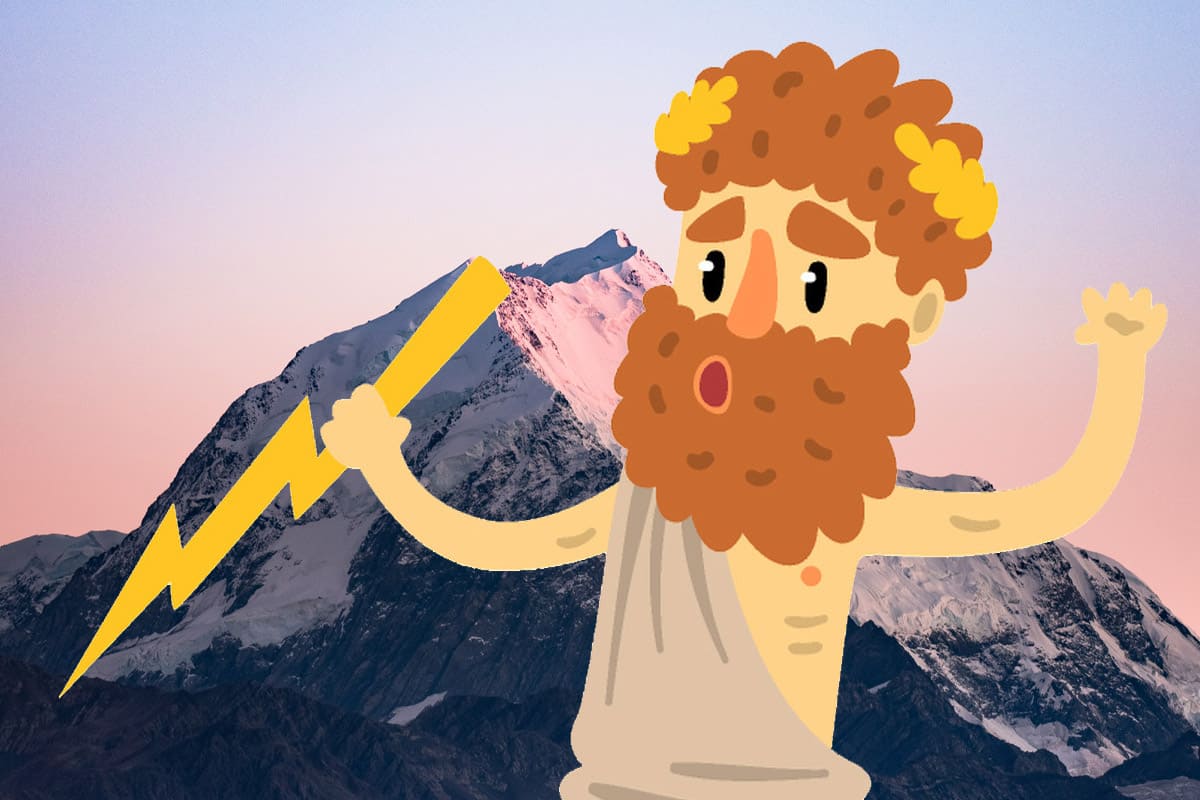
4. The Age of the Gods
Once Zeus became an adult, he returned to face his father and free his siblings. His grandmother Gaia, who had secretly raised him, supplied him with an emetic which he tricked his father into swallowing. This caused Kronos to vomit up his children, starting with the stone and going in reverse order until Hestia emerged, all his children now fully grown. Zeus and his siblings left the sickly Kronos and, with the aid of their mother and grandmother, freed their uncles, the Cyclopes.
In return, the Cyclopes gave them weapons. The most powerful of these were Zeus’s lightning bolts, Poseidon’s trident, and Hades’s helm of invisibility. The gods and the Cyclopes, along with the help of several minor gods, nymphs, and others, then engaged the Titans in a ten-year war.
At the end of the ten years, Gaia advised Zeus to release the Hecatoncheires. He did, and they joined the fight against the Titans. This turned the tide in the gods’ favor and the Titans were defeated. Their leaders (Kronos and possibly Iapetus) were cast into the depths of Tartarus, where they remained imprisoned. The Hecatoncheires became their guards as a sort of vengeance.
5. Divided Loyalties
Though the Titanomachy overthrew the Titans’ rule, several of them either did not take part on the war or were even actively on the gods’ side, and thus remained free of Tartarus. Rhea, mother of the gods, who was generous and kind, was involved in many later myths, including raising her grandson, Dionysus.
Oceanus actively took part in the war against his siblings through his children and grandchildren. He sent his daughter, Styx, along with her children Nike (victory), Zelus (envy), Kratos (power), and Bia (force) to fight for Zeus against Kronos. Oceanus and his wife Tethys also cared for their injured niece, Hera, during the war.
Most of the second-generation Titans remained free. Helios retained his position as the sun, while Prometheus, who fought on the side of the gods, was later punished by Zeus for bringing fire to mankind. Leto became a consort of Zeus, and later the mother of the twin gods Artemis and Apollo.
Though Atlas and Menoetius fought on the side of the Titans, they received lesser punishments than Tartarus. In some myths, Menoetius was sent to Erebus for his hubris. Meanwhile, Atlas was tasked with the burden of the sky on his shoulders for eternity.
All of the female Titans remained free. Mnemosyne and Themis both spent time as wives or consorts of Zeus. Themis became the mother of the Morai (Fates) and the Horae (Hours). Mnemosyne birthed the nine muses; Calliope (epic poems), Clio (historical writing), Euterpe (music and lyrical poems), Erato (love poems), Melpomene (tragedies), Polyhymnia (sacred music), Terpsichore (dancing), Thalia (comedic performance), and Urania (astronomy).
6. Typhon
Typhon was not technically a Titan, but he is often conflated with them. In most myths, he is the youngest child of Gaia, born either through parthenogenesis or through a mating with Tartarus. Like the Giants before him and the Titans before that, Typhon challenged Zeus for the rule of the universe.
Gaia was said to have borne Typhon out of anger when the Olympians killed her children, the Giants. In some stories, though, Typhon’s mother is instead Hera by Kronos himself, conceived as revenge for Zeus’s self-birthing of Athena.
He was a serpentine monster who mated with Echidna to produce many monsters, including the infamous Lernean Hydra and the Chimaera. When he fought Zeus, the war was brief but devastating. Zeus managed to overcome him. Like Kronos before him, the defeated Typhon was tossed into Tartarus to suffer for eternity.
7. Escape from Tartarus
While many sources say that the Titans in Tartarus languished there for eternity, others write of their release or potential release. Though many stories center around their future escape as a cataclysmic event, the lyric poet Pindar wrote of a more benevolent story.
In it, Zeus eventually forgave and released the Titans trapped in Tartarus, in exchange for their swearing complete loyalty to him and the rest of the Olympians. When he was sure of this, he sent Kronos to earth and gifted his father rule over the Isles of the Blessed, or the Fortunate Islands. These were the earthly residences of the spirits of dead Greek heroes, where it was never winter.
Only the purest of heart would go to these isles. A person would first have to be reincarnated thrice, and each time they died go to Elysium, the highest place of honor in the Underworld. On their fourth death, they would be welcomed onto the islands.
Kronos ruled as king of the islands, but remained subject to Zeus forevermore.
8. Prometheus and Epimetheus
Prometheus and Epimetheus were second-generation Titans and brothers who lived on earth. Prometheus loved humans and brought them sacred knowledge, repeatedly earning the ire of Zeus.
Zeus created Pandora and gifted her as a wife to Epimetheus. She was the first human woman, and she was perfect. However, he tricked her into opening a box and, when she did so, releasing all the sins into the world and trapping hope.
Prometheus’s greatest transgression against Zeus, however, was learning the secrets of fire and bringing them to mankind, allowing humans to develop more quickly than Zeus had ever planned. In his fury, Zeus bound Prometheus to a rock with unbreakable chains. There, Zeus sent an eagle which would feast on Prometheus’s liver ripped fresh from his body each day. Every night, it would painfully regrow and the whole process would begin again.
This punishment was somewhat of a betrayal between cousins, as Prometheus had sided with the gods against his own people, the Titans. However, Prometheus was eventually released with Zeus’s permission by the hero Heracles. Heracles, Zeus’s son, killed the eagle and struck the chains that bound the Titan, ending his punishment and setting him free.
9. Rhea, Mother of the Gods
This Titanesses continued to play a very active role in Greek mythology during the rule of the Olympians. Rhea was considered a goddess as well as a Titan, making fair judgements and imparting wisdom from her mountains. She rescued and raised her grandson, Dionysus, snatching him from the wrath of his step-mother Hera.
Rhea also acted as a messenger for Zeus on occasion. When nobody wanted to inform Demeter of the outcome of her challenge to the marriage of Hades and her daughter Persephone, it was Rhea who calmly delivered the news that Persephone would remain queen of the Underworld.
Rhea was also present at the birth of Artemis, where she appeared to help Leto with the birth, and Apollo, where she aided Artemis in bringing her own twin into the world from their mother’s womb.
10. Leto, Mother of Hunters
Leto was a second-generation Titaness who still played an important role long after the power-seizure by the Olympians and Zeus. She was briefly a consort of Zeus, during which time she conceived twins with her cousin. These children would be the hunter-gods of Olympus, Artemis (goddess of the moon, animals, and the wilderness) and Apollo (god of the son, music, and medicine).
Hera cursed Leto that she might not give birth on solid ground. However, with the help of Poseidon, Rhea, and several others, she reached a floating island and was there able to safely birth Artemis. Artemis then aided her mother in the birth of Apollo.
Leto remained extremely important to the twins, and honored very highly by Zeus. When she was insulted by Queen Niobe, Artemis and Apollo responded with death and destruction.
Final Thoughts
The Titans were a powerful force used by the Ancient Greeks to explain the unknowable forces of nature. Their concession to the gods was also a concession to humanity, showing how it came to be that we, small as we are, ended up ruling the earth. Pretty overwhelming!

